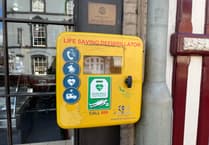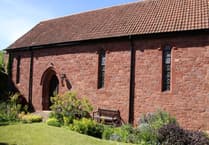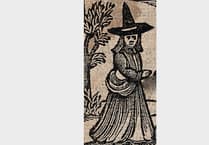A TALK about Exmoor Archaeology, by Rob Wilson-North was given to members of Thorverton History Society at their November meeting.
Before Rob began his talk Barry asked us all to remember Beryl Coe who died recently and who did so much for the history society over many years.
Rob then delivered his talk on recent advances in the understanding of the archaeology of Exmoor.
Perceptions of archaeologists have changed over the last 30 years and the reality can be different from the media presentation.
Archaeology is the search for the truth but Rob likened it to a four-dimensional jig saw and it may well be we don’t have all the pieces.
Recent work has seen research and conservation of World War Two buildings and encouragement has been given to military vehicle restorers as they help raise the profile of the era.
Exmoor National Park has a team of archaeologists who work on conservation, surveys, research and education to increase public interest in their work.
The mires project, funded by South West Water, has looked at water retention in the peat land and in some places excavation work has been carried out
On the surface, Exmoor can look empty but just beneath the surface is the evidence of thousands of years of occupation. Barrows show evidence of prehistoric history, peat cutting and pack horse ways show evidence of medieval times and later there is iron mining and Victorian sheepfolds.
More than 8,000 years ago during the Mesolithic period hunter gatherers lived in the woodland that was there then. Many flint working sites have been found and in those days you could have walked to Lundy.
Exmoor was still woodland at the start of the Bronze age. Work has been done on standing stones on the moor and Exmoor has a pattern of stone settings resembling a six or a five on the face of a dice. Other standing stones can be found at Shoulsbury and the Porlock Stone circle.
There are Iron Age hill forts or enclosures at Cow Castle and Roborough Castle.
There was little Roman occupation but there are two coastal fortlets with evidence of early occupation and recently a fort has been discovered near Wiveliscombe.
Medieval settlements can be found at Badgworthy Water. Although this site was deserted in about 1400, it is the legendary home of Lorna Doone.
Another settlement site can be found at Edwins Farm, Lankcombe or Lanacombe, a longhouse with two enclosures.
There are route ways linking the settlements which are visible only on surveys as there are few records of them.
Scottish influences were brought to Exmoor in 1820 and 1860 as can be seen from single storey houses and sheep pens at Simonsbath. Peat cutting was a domestic venture and not an industrial one and turf stores can be found in farmsteads.
Porlock was referred to locally as the end of the world. In 2014 test pit excavation work was carried out and they found a horse burial beside the church. This was dated to the 1700’s and the bones showed evidence of butchery.
Initially this was a bit baffling but they found out that at the time the rector of Porlock was Stephen Hales. As well as being the rector he was also a scientist and he became famous for his experiments on horses to establish blood circulation. He was the founder of Haemodynamics.
There are some recent major publications on the moor, one of them was written by our speaker.
Our next meeting and AGM is at 7.30pm on January 22, 2016 and new members are always welcome. Meetings take place in the WI hut in Thorverton.
Robert Turner



